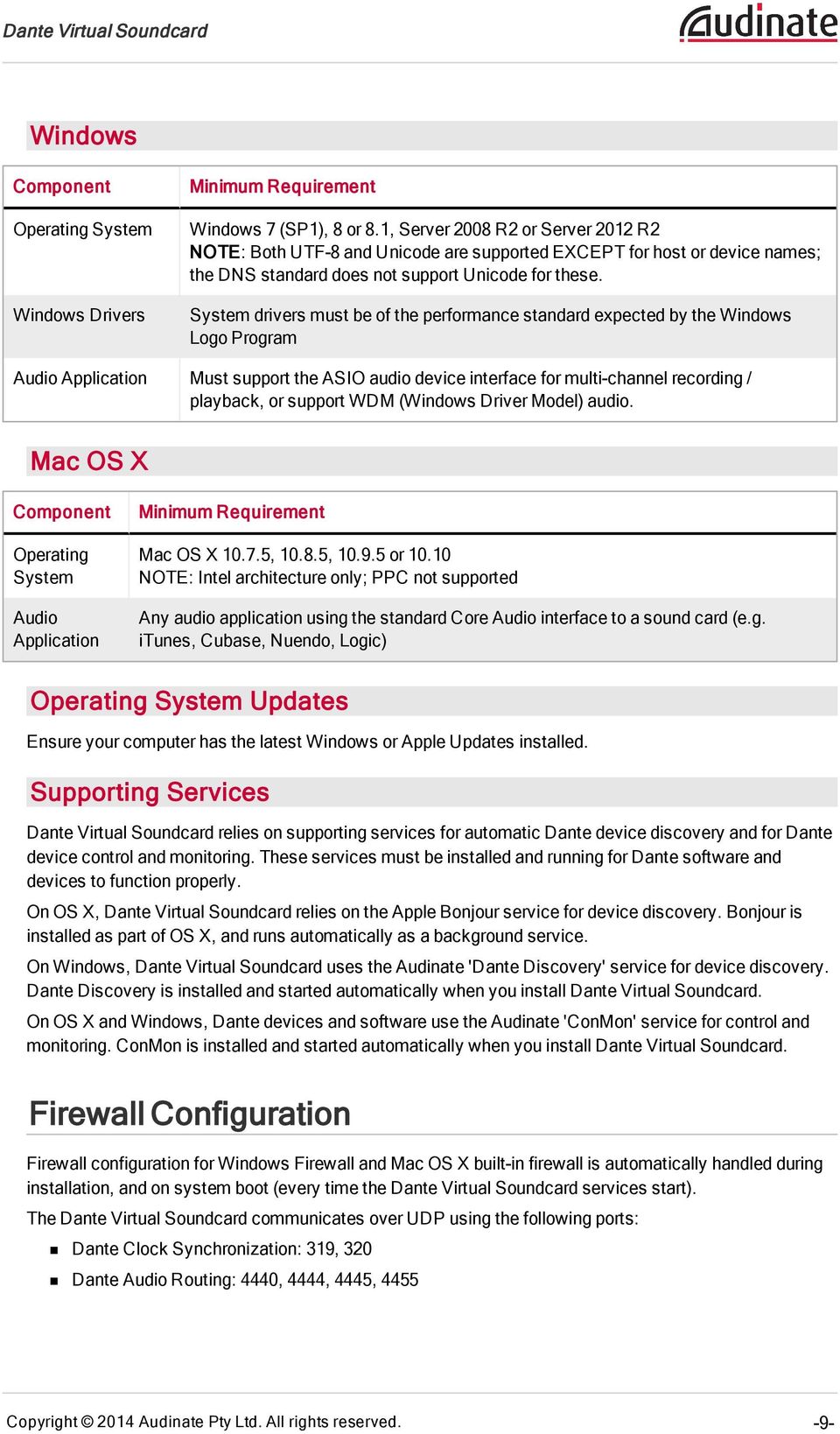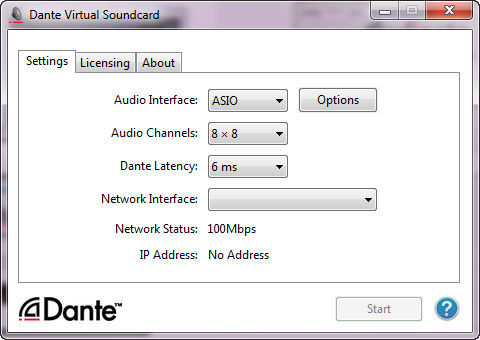
- #Dante virtual soundcard pro#
- #Dante virtual soundcard software#
- #Dante virtual soundcard Pc#
- #Dante virtual soundcard Offline#
- #Dante virtual soundcard plus#
It provides 64 channels of bi-directional audio at 48kHz, and can be fitted to any dLive I/O Port when equipped with a M-DL-ADAPT interface. M-Dante is one of a range of digital audio networking options available for dLive, GLD and iLive to enable integration with other systems, digital mic splitting, multi-track recording and system expansion.
#Dante virtual soundcard plus#
It uses CAT5 cable and standard networking components to distribute multiple streams of audio plus integrated control data with sub millisecond latency. That may still be too high or Via might still set everything at 10 in which case I'll re-think my approach.Dante TM is a ground breaking, Ethernet compliant audio networking technology developed by Audinate to satisfy the increasing demands of the live sound industry for high performance audio, routing flexibility and affordable direct to computer recording.

Being a bit of a stubborn old dog I'm going to give Dante one more try by installing DVS on both machines with Via on my laptop for clocking and see if I can get the latency down from Via's in-built 10 ms to DVS's minimum 4 ms.

That's when I started looking into ways to route audio over LAN and came across Dante.
#Dante virtual soundcard Pc#
I had it running very smoothly with a 2nd interface I already owned to route the audio from the PC slave but the sound quality just wasn't there. So I started to think I could set it all up as an alternative to VEPro and really justify my time investment. It's a bit of a story as to why I've taken the Logic - Reaper route this far but suffice it to say that I ended up investing a load of time into configuring it (due to a related issue that was resolved that way) and getting quite fond of Reaper in the process. Yes, I know VEPro can do all this and no I'm not prepared to spend a fortune on extra hardware. What the guys at VEP have done is insane because they've essentially removed the need for buying into a bunch of extra interfaces and some kind of digital connection between 2 DAWs. All connected through various Rednet interfaces over the Date network.
#Dante virtual soundcard pro#
One has Cubase connected to Rednet Pcie Card (low latency), the other is Pro Tools HDX system (no latency). The latency on the DVS is that of the like of an old USB 1 interface so your not going to get decent playability.Ģ x Mac Pro.
#Dante virtual soundcard Offline#
Im sure you know this but if you are just looking to 'host' sounds in the separate rig, why wouldn't you just use VEP? Its seamless, auto delay compensates and you can bounce offline with it.įor what you're wanting to achieve, for it to be reliable and streamlined, your gonna have to invest in more gear Id say. You may find that many questions can also be answered in the FAQs available on the Audinate website. If you have any further questions feel free to post back to this forum, or contact our support channel on our website…. Hence the requirement for Dante Via on a third computer. One needs to be stopped before the other application can be started.
#Dante virtual soundcard software#
Then you will be able to pass audio between the multiple channels available from DVS.ĭante Virtual Soundcard and Dante Via are two different software applications, and cannot run simultaneously on the same computer at the same time. However, if you wanted to run more than 16x16 channels between two computers, you might want to consider using two instances of Dante Virtual Soundcard on two separate computers, and Dante Via on a third computer to act as the clock master. the computer/s it’s installed on.ĭante Via now supports multiple channels (16x16) between DAW applications, and can send audio between two computers without a Dante hardware device. Dante Controller DOES NOT handle clocking!! Once routes and devices are configured, Dante Controller can actually be removed from the network, i.e. The Dante Controller is there to enable the user to make routes and configure devices only, and does not act as the clock master at all. This is why you are unable to make it function correctly in this way. We do not support the use of DVS without a hardware device or Dante Via present on the network to act as the master clock. To answer the original post, having no Dante-enabled hardware device or Dante Via between two computers running Dante Virtual Soundcard will cause clock misconfiguration errors, as you can see. The master clock (Dante-enabled hardware or Dante Via) will be automatically selected as the master when it is connected, and you shouldn’t need to make any configurations to this. The master clock must be present on the network at ALL times.

So, first of all, Dante Virtual Soundcard DOES require at least one Dante-enabled hardware device, or Dante Via to be present on the network to act as the master clock, as DVS cannot act as the master clock independently, and can only be a slave device to the master clock on the network. Just wanted to put some clarification into the use of both Dante Virtual Soundcard and Dante Via.


 0 kommentar(er)
0 kommentar(er)
